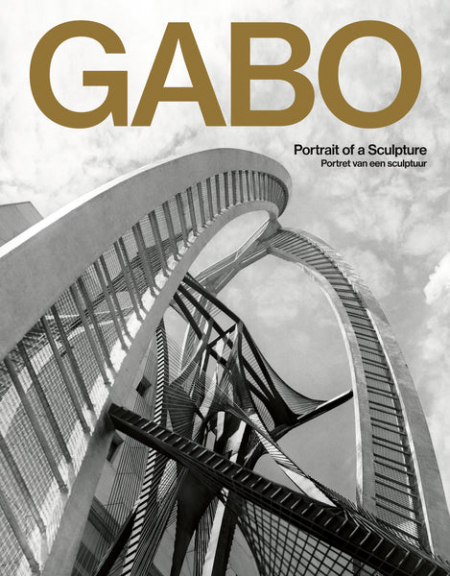GABO: Portrait of a Sculpture. Portret van een sculptuur.
The publication GABO. Portrait of a Sculpture focuses on one artwork: Gabo’s sculpture for department store De Bijenkorf on the Coolsingel in Rotterdam.
The history of this untitled sculpture by Gabo is interwoven with the history of the city in many ways. The immediate reason for the publication is the completed and long-awaited restoration of the work. The book examines the sculpture from many angles: the history of the sculpture then and now as well as its relationship to Rotterdam, the sculpture in relation to Gabo’s thinking and oeuvre, and the restoration and the changing meaning of the sculpture in the public space.
Colopon
Editorial boarde: Eleonoor Jap Sam, Dees Linders
Contributions: Carel Blotkamp (preface), Dees Linders, Siebe Thissen, Patricia van Ulzen, Toke van Helmond (Catherina Lehning), Eleonoor Jap Sam, Rutger Morelissen, Sjoerd Westbroek, IEF Capital
Editors: Dees Linders, Siebe Thissen, Patricia van Ulzen, Eleonoor Jap Sam
Image editors and research: Sannetje van Haarst, Nienke Post
Copy editing: Ronja Driessen, Eleonoor Jap Sam, Dees Linders, Jacqueline Schoemaker, Marie Louise Schoondergang Translation: Marie Louise Schoondergang
Design: 75B
Print: Veldhuis Media B.V.
Specifications
ISBN 978-94-92852-27-4
Price: € 30,-
Pages: 224
Dimensions: 20.7×26.5cm
Binding: Hardcover
Language: Nederlands, Engels
Publication date: 7 april 2022
Partner: Jap Sam Books Rotterdam
About the artwork
According to Naum Gabo, the three-dimensional construction that has flanked De Bijenkorf department store since 1957 was an ‘ideological contribution to Constructivism’. This is related to the level of integration between the sculpture and the architecture, the transparency of the space defined by the sculpture and the impression of weightlessness in a sculpture of this format and weight (approximately 40,000 kilos).
The work dates from a period in which Gabo’s early abstract-geometric constructions had made way for more organic constructions. Gabo explained to the art historian Herbert Read that the sculpture was inspired by organic structures found in plants (Herbert Read, Gabo, Rotterdam 1958, unpaginated). The gradual changes in direction within the sculpture suggest movement.
